Become diagnosed with diabetes could create confusion very often, but one critical step in dealing with these kinds of conditions is to understand their symptoms and treatment. This informative guide is aimed at newly diagnosed patients as well as their caregivers and clearly explains diabetes symptoms and available treatments.
 What is Diabetes?
What is Diabetes?Diabetes is a name given to a chronic condition in which the body fails to properly process food for use as energy. There are mainly two types of diabetes- Type 1 diabetes, where the body does not produce any insulin, and Type 2 diabetes, which occurs when the body does not utilize its insulin efficiently. Another form of diabetes is Gestational which occurs during pregnancy.
Recognizing the early signs and symptoms of diabetes is critical to the referral of treatment and managing the condition successfully. Here are some symptoms that newly diagnosed likely patients may encounter:
If you feel you are having any symptoms that indicate you may be diabetic, it is important that you consult a doctor for further assessment and diagnosis. Diagnosis is usually through blood tests, which can include:
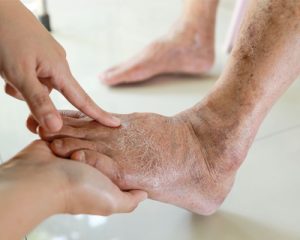 Management for Diabetes
Management for DiabetesAt present, no treatment is available for diabetes, but with the right prescription and lifestyle changes, the disease can be managed. The prescribed treatment varies between different types of diabetes and between individuals with other health needs.
For a person living with type 1 diabetes, insulin is the major medicine. There may be either injections or an insulin pump. This is a device that continuously administers insulin. Patients should also monitor their blood sugars and adjust their insulin doses accordingly.
Similar to type 1, treatment for type 2 diabetes combines lifestyle modification and oral medications. The treatment may include insulin for some of the patients. Such strategies can work:
Gestational diabetes is a diabetes that happens during pregnancy and usually clears itself out once childbirth is done. The maintenance is to keep the blood sugar level at healthy range with diet and exercise. Sometimes, taking insulin may be required.
Good diabetes management implies steady blood glucose monitoring. The following are important practices for continuous diabetes care:
If diabetes is not controlled sufficiently, it can lead to disastrous health complications. These may include:
Getting a diagnosis of diabetes can be distressing, but it also signals the beginning of an active journey toward better health. Learning the symptoms, treatment options, and management instructions will enable newly-diagnosed patients and their caregivers to make solid progress in taking action to control diabetes. Remember you are not alone- support from healthcare providers, family, and friends goes a long way in managing diabetes effectively. Use this as a practical guide and don’t hesitate to call for help when needed.
Be informed, stay hopeful and realize that you are empowered to take care of your health; many resources and friends are there to assist you along your journey.
Cholesterol is often questioned in the sense that it is a compound called a substance and serves a number of functions in the male condition but leads to varied degrees of ill health when it becomes unbalanced. This focuses specifically on the concerns of heart health as it relates to the adults High-Density Lipoprotein (HDL) and Low-Density Lipoprotein (LDL) cholesterol. Definitions, the types of cholesterol and the methods of measurement, risk factors, and lifestyle changes that can be made to maintain healthy levels of cholesterol will be discussed.
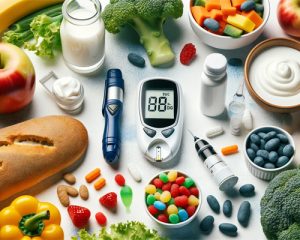 1. Definition
1. DefinitionCholesterol is a waxy, fat-like substance that is found in every cell of the body. It is essential for producing hormones, vitamin D, and substances that help digest foods. Cholesterol is carried in the bloodstream by lipoproteins. Naturally, the body makes all the cholesterol it needs; dietary sources also provide some cholesterol.
HDL cholesterol has frequently been called “good” cholesterol because it is protective for the heart and transports cholesterol away from the arteries and back to the liver, where it is processed and removed from the body. Higher levels of HDL are associated with a lower risk of developing heart disease.
LDL cholesterol is sometimes referred to as “bad” cholesterol. It binds to the cells for use but gets excessive in the blood; as a result, excessive amounts lodge within the arteries and create cholesterol buildups. This condition is termed atherosclerosis, which risks narrowing blood vessels and causing heart diseases and stroke.
Cholesterol levels are known to be evaluated by a blood test often referred to as a lipid panel. The results give you the following measurements: total cholesterol, high-density lipoprotein (HDL), low-density lipoprotein (LDL), and triglycerides. The following guidelines indicate the normal cholesterol levels in adults:
Several aspects can determine cholesterol levels and predispose an individual to heart disease:
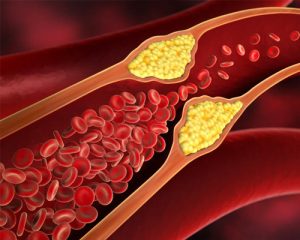 5.1 Healthy Diet
5.1 Healthy DietAdopt a heart-healthy diet that includes
Regular Exercise Physical activity should be at least 150 minutes every week of moderate-intensity aerobic exercise to increase HDL cholesterol levels and lower LDL cholesterol levels. Walking, cycling, swimming, and jogging fall under this exercise category.
Practicing healthy weight management could fall in the range of posting LDL and triglycerides while raising HDL cholesterol. Even losing a few pounds may affect cholesterol levels to an extent.
Quitting smoking will raise HDL levels while also assisting in enhancing heart health via blood pressure and circulation improvement.
Periodic screening for cholesterol enables one to trace the levels and the risk factors associated with it. A normal-risk adult-age should at least be screened once every four months for an up to six-year timeline.
Cholesterol is a very important factor for everyone in their overall health, especially related to how heart employs it in overall functioning. One should understand the difference of HDL and LDL cholesterol and the need for their important balance for prevention against heart disease. But all these measures are possible with healthy lifestyle changes like diet improvement, increase physical activity, reduce tobacco smoke, making many changes in adults towards their cholesterol levels and thus improve overall health.
This above chart will serve as a perfect reference point that clears the measurements of cholesterol levels into meaningful implications toward heart health.
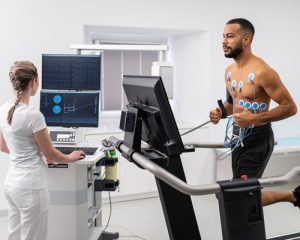 Cancer remains one of the leading causes of morbidity and mortality worldwide, particularly among adults over the age of 40. As our bodies age, the risk of developing cancer increases, making preventative measures crucial for maintaining health and well-being. This article provides an in-depth exploration of effective cancer prevention methods tailored for adults in this age group. We will discuss risk factors, prevention strategies, recommended screening guidelines, and actionable steps based on current clinical studies and epidemiological data.
Cancer remains one of the leading causes of morbidity and mortality worldwide, particularly among adults over the age of 40. As our bodies age, the risk of developing cancer increases, making preventative measures crucial for maintaining health and well-being. This article provides an in-depth exploration of effective cancer prevention methods tailored for adults in this age group. We will discuss risk factors, prevention strategies, recommended screening guidelines, and actionable steps based on current clinical studies and epidemiological data.
Identifying and understanding the risk factors associated with cancer can empower individuals to take proactive measures. The most common risk factors include:
Implementing lifestyle changes and preventive measures can significantly reduce the risk of cancer. Key strategies include:
A diet rich in fruits, vegetables, whole grains, and lean proteins can protect against cancer. According to a study published in the Journal of the American Dietetic Association, diets high in antioxidants and phytochemicals can reduce cancer risk. Key recommendations include:
Physical activity is a proven preventive measure against cancer. The American Cancer Society recommends at least 150 minutes of moderate exercise or 75 minutes of vigorous exercise each week. Exercise helps maintain a healthy weight, boosts the immune system, and improves overall health.
Quitting smoking has immediate and long-term benefits. Research indicates that former smokers have a significantly lower risk of developing lung cancer compared to those who continue to smoke. Various resources, such as quitlines and smoking cessation programs, are available to assist individuals in quitting.
Reducing alcohol consumption can significantly lower cancer risk. The WHO recommends limiting alcohol intake to no more than two drinks per day for men and one drink per day for women. This can reduce the risk of several alcohol-related cancers.
To achieve a healthy weight, it is essential to balance calorie intake with physical activity. The Centers for Disease Control and Prevention (CDC) emphasizes that a combination of healthy eating and regular exercise is key to preventing obesity-related cancers.
Regular screenings are critical for early detection of cancer, especially for adults over 40. The following guidelines provide a framework for cancer screenings:
Women should begin annual mammograms at age 40, or earlier if there is a family history of breast cancer. The U.S. Preventive Services Task Force (USPSTF) suggests clinical breast exams as part of routine care.
Individuals aged 45 and older should undergo colorectal cancer screening. The USPSTF recommends various methods, including colonoscopy every 10 years or stool-based tests annually, depending on risk factors.
Women should begin cervical cancer screening at age 21. Those aged 30 to 65 should have a Pap test combined with HPV testing every five years, or a Pap test alone every three years.
Men should discuss the potential risks and benefits of prostate cancer screening with their healthcare provider starting at age 50, or age 45 for those at higher risk.
Annual low-dose CT screening is recommended for high-risk individuals aged 50 to 80 years who have a history of heavy smoking.
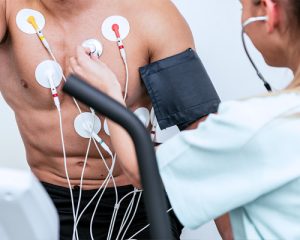 Cancer prevention is a multifaceted approach that involves understanding risk factors, embracing healthy lifestyle choices, and adhering to recommended screening guidelines. Adults over 40 can significantly reduce their cancer risk through proactive measures and early detection strategies. By making informed health decisions and collaborating with healthcare providers, individuals can contribute to their long-term health and well-being.
Cancer prevention is a multifaceted approach that involves understanding risk factors, embracing healthy lifestyle choices, and adhering to recommended screening guidelines. Adults over 40 can significantly reduce their cancer risk through proactive measures and early detection strategies. By making informed health decisions and collaborating with healthcare providers, individuals can contribute to their long-term health and well-being.
 This guide is designed to help patients aged 45 and older prepare for their first cardiac examination. Understanding what to expect during cardiac tests can alleviate anxiety. Each section covers a common cardiac test, including detailed procedures to follow, as well as the risks, contraindications, and post-procedure care. Always remember, consulting your healthcare provider for personalized advice is paramount.
This guide is designed to help patients aged 45 and older prepare for their first cardiac examination. Understanding what to expect during cardiac tests can alleviate anxiety. Each section covers a common cardiac test, including detailed procedures to follow, as well as the risks, contraindications, and post-procedure care. Always remember, consulting your healthcare provider for personalized advice is paramount.
Cardiac tests are essential tools that help healthcare providers assess your heart’s health. These tests can help identify issues, monitor existing conditions, and determine necessary treatments. Common cardiac tests include:
Each test has its own purpose and procedure. This guide will provide step-by-step instructions, common concerns, preparations needed, and aftercare recommendations.
An Electrocardiogram (ECG) is a non-invasive test that records the electrical activity of your heart. It helps detect heart problems like arrhythmias and other cardiac conditions.
The ECG procedure typically lasts about 10-15 minutes, with little to no waiting time involved.
There is no specific care required after an ECG. You can resume your normal activities immediately. However, if you experience any unusual symptoms, contact your healthcare provider.
ECGs are generally safe. However, patients with allergic reactions to adhesives should inform their provider. Rarely, some might experience skin irritation from the electrodes.
Patients often worry about discomfort from the electrodes or the pressure to stay still. Rest assured, the electrodes are painless, and the test duration is minimal.
A stress test monitors the heart’s performance during physical exertion. This may involve walking on a treadmill or cycling while your heart rate and blood pressure are monitored.
The stress test usually takes 30-45 minutes, including prep and monitoring time, and might include a short waiting period for preparation.
After the test, rest for a few minutes while your heart rate normalizes. You may be advised to avoid strenuous activities for the rest of the day, but otherwise, you can resume daily activities.
Stress tests are not recommended for individuals with severe heart conditions, recent heart attacks, or those who cannot exercise due to physical limitations. Discuss any concerns with your healthcare provider before the test.
Patients may fear fatigue or discomfort during the exercise. It’s essential to know that you will be monitored closely, and you can stop at any time if needed.
An echocardiogram uses sound waves to create moving images of your heart. This test assesses heart structure and function, including the size of the chambers, condition of the valves, and overall heart function.
The entire echocardiogram takes about 45-60 minutes, with minimal waiting involved.
You can resume normal activities immediately. If the gel used during the procedure causes skin irritation, wash it off with soap and water.
Echocardiograms are very safe and have no known risks. The only contraindication might be for patients with severe allergies to ultrasound gel, which is rare.
Many patients are anxious about the ultrasound gel or the procedure itself, but the process is painless and non-invasive.
 Understanding cardiac testing procedures can empower you to approach your heart health with confidence. Remember the importance of consulting with your healthcare provider for personalized advice tailored to your specific health needs. Regular cardiac testing can lead to early detection and better management of potential heart conditions, ultimately improving your overall quality of life.
Understanding cardiac testing procedures can empower you to approach your heart health with confidence. Remember the importance of consulting with your healthcare provider for personalized advice tailored to your specific health needs. Regular cardiac testing can lead to early detection and better management of potential heart conditions, ultimately improving your overall quality of life.
For any concerns or questions regarding these procedures, please reach out to your healthcare provider before your appointment.